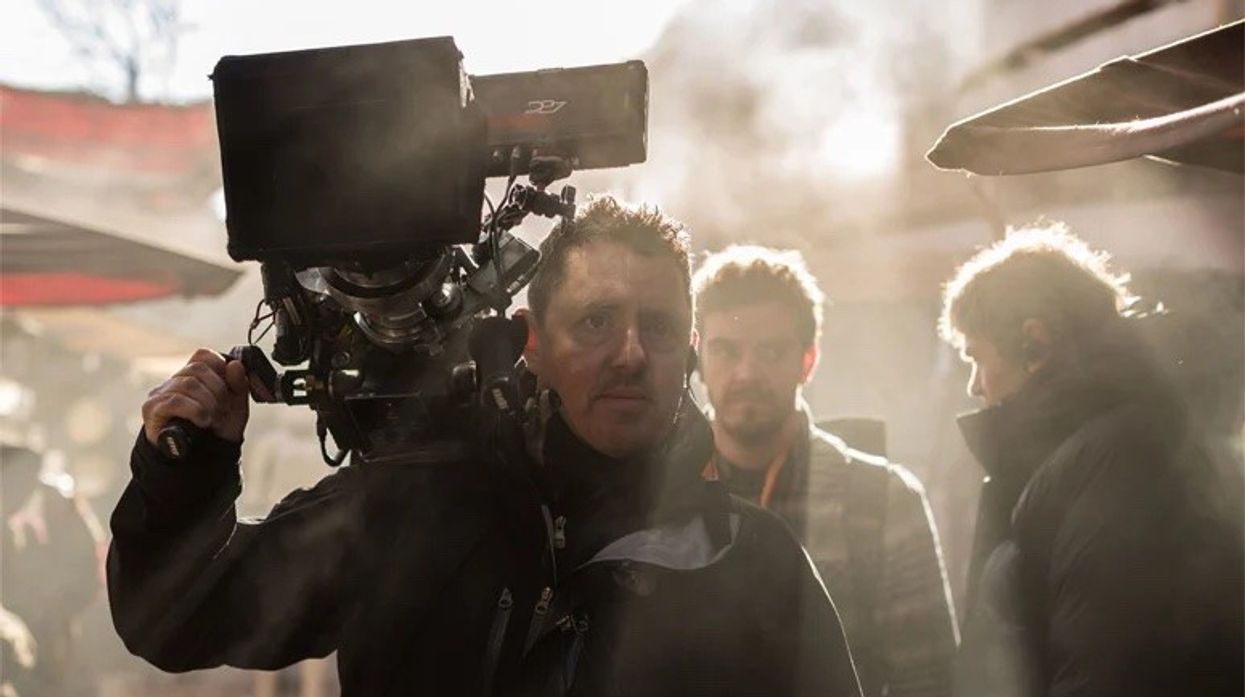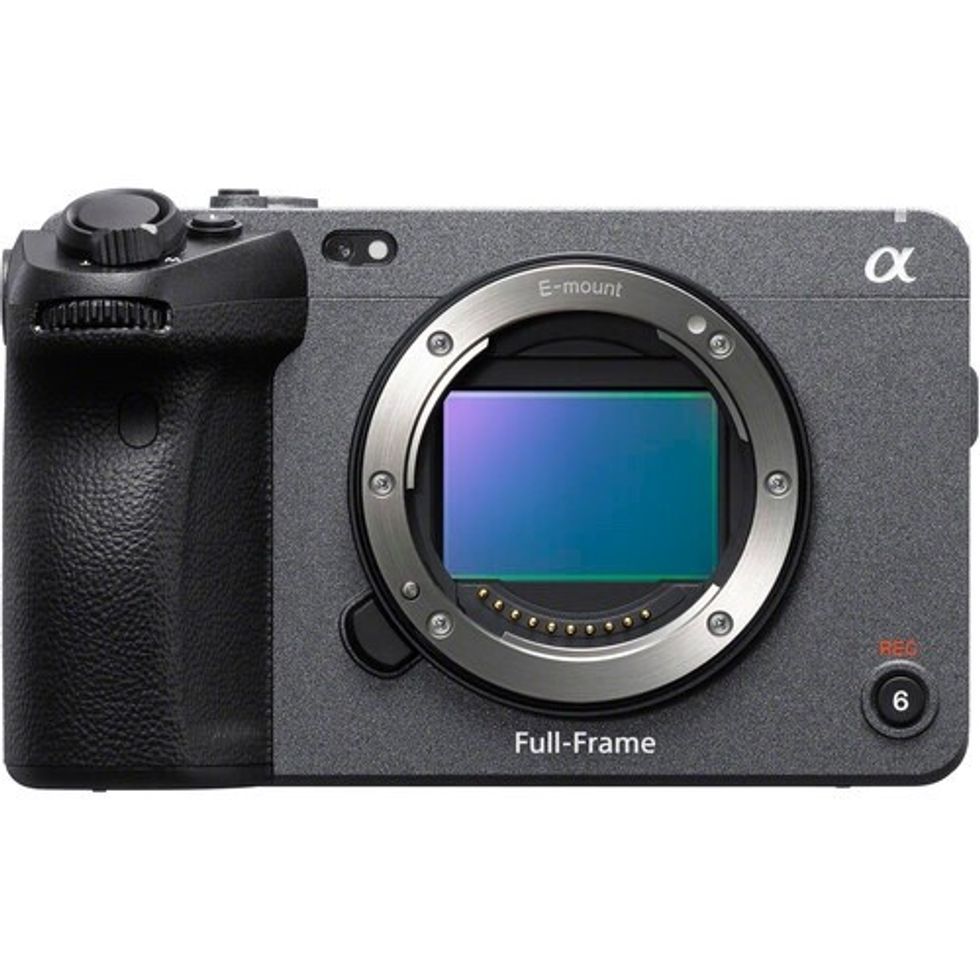If Gareth Edwards and Greig Fraser Can Shoot a Sci-Fi Feature on a Sony FX3, So Can You
Why you might actually be able to shoot your dream project on a $3,000 camera after all.

If we’ve said it once on this site, we’ve said it a thousand times: The camera doesn’t make the project, it’s the person behind the camera. The story they’re trying to tell is what’s important.
One of the most recent (and big if true) examples of this dictum comes from the most influential filmmakers and cinematographers in the game. More reports are surfacing online that director Gareth Edwards and co-DPs Greig Fraser and Oren Soffer's latest project, the ambitious high-concept sci-fi action thriller The Creator, was shot on the Sony FX3—a highly affordable, yet surprisingly solid digital cinema camera which you can buy new, today for under $4,000.
Of course, there might be more to this story than this headline states, but the general principle is the same as always. If you can dream, and write it, then you can bring your project to life with the best camera available to you. Even if that camera costs $3,000 instead of $30,000 or more.
Let’s take a look at what we know about The Creator, the Sony FX3 behind it, and how Gareth Edwards, Greig Fraser, and co-DP Oren Soffer are perhaps the best examples of DIY-turned-blockbuster filmmakers who could teach us all a thing or two about storytelling in film and video.
Was The Creator Shot on the Sony FX3?
That’s the question at the heart of the video above by Scott Jeschke, a writer and director who has been following this story closely and has some interesting tidbits to share about the camera (or cameras) used by Edwards and Fraser on The Creator, and why they might have opted to use the Sony FX3 for such an ambitious production.
Based on a podcast Greig Fraser recorded about a year ago talking mostly about his work on Dune: Part One, Jeschke references a clip in which Fraser talks rather openly and adamantly about how much he likes the Sony FX3 and his explicit plans to “shoot this entire film on this camera.”
In particular, Fraser praises the Sony FX3 for its “ridiculously” small size and its high ISO capabilities, even going as far as to declare the FX3 as a camera that other companies should take note of and try to copy and match in terms of specs and useability. Although, as Jeschke points out in his video, in the past year—and even a bit before—there are indeed plenty of cameras from the likes of Canon, Panasonic, Blackmagic, and more that rival the FX3 in functionality and price at this point.
If you’d like to hear more about Greg Fraser’s creative process and camera preferences, and workflows, we also have a full podcast interview with both Fraser and editor Joe Walker which you can check out on the No Film School Podcast here.

The Cameras Behind The Creator
It’s interesting to see that the FX3 has been used as such a major part of the production for The Creator, an ambitious high-concept sci-fi feature film that should see both Edwards and Fraser operating at the tops of their games. Judging from Fraser’s admiration for the FX3, it is indeed very likely that the majority of the film was shot on the FX3, and only a few of the bigger VFX shots were done with the ARRI Alexa 35—perhaps simply at the behest of the team or company handling the visual effects.
We're also able to report that DP Oren Soffer has reached out to confirm that The Creator was indeed 100% shot on the Sony FX3 and that the team shot on Kowa Cine Prominar and Atlas Mercury lenses to help bring out its beautiful, big budget feature look, with its more indie-minded budget.
Is the Sony FX3 Right for Your Feature or Project?
With the Sony FX3 in particular, it is 100 percent a fantastic camera that would do great on the highest-end projects like The Creator, or your indie short film, commercial project, or experimental music video. If you are curious about checking out the Sony FX3, we’ve written about it several times in the past and have considered it a great cinema camera option.
If you’re interested in learning more about the Sony FX3 and how it might be right for your productions, you can check out the full specs and features below:
- 12.1MP Full-Frame CMOS Exmor R Sensor
- UHD 4K up to 120 | 1080p up to 240
- Compact Form for Cage-Free Operation
- 10-Bit 4:2:2 XAVC S-I,16-Bit Raw Output
- S-Cinetone/S-Log3/HLG, 15+ Stops DR
- Detachable 2 x XLR/TRS Adapter Handle
- Phase Detection AF/Face Tracking/Eye AF
- 80 to 409,600 Expanded ISO Range
- Dual CFexpress Type A/SDXC Card Slots
However, at the end of the day, the lesson to be learned from the news about the Sony FX3’s reported use on a big-budget sci-fi thriller by Gareth Edwards and Greig Fraser is simply one of inspiration and resilience. It’s insane to me that you still hear filmmakers complain about not being able to make a film or project simply because they don’t have access to or budget for the right camera.
Sony FX3 Cinema Camera

- 12.1MP Full-Frame CMOS Sensor
- UHD 4K up to 120 | 1080p up to 240
- Cage-Free Design
- 10-Bit 4:2:2 XAVC S-I,16-Bit RAW
- S-Cinetone/S-Log3/HLG, 15+ Stops DR
- Detachable XLR/TRS Adapter Handle
- Phase Detection AF/Face Tracking/Eye AF
- 80 to 409,600 Expanded ISO Range
- Dual CFexpress Type A/SDXC Card Slots

 "'Back Home"via Mercedes Arutro
"'Back Home"via Mercedes Arutro 'Back Home'via Mercedes Arutro
'Back Home'via Mercedes Arutro 









